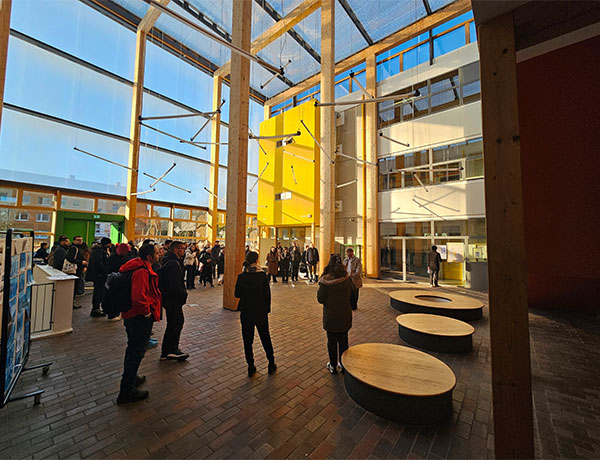
For architecture students at the University of Hartford, education extends far beyond the studio. Study abroad is a core component of the program—offering immersive, place-based experiences that broaden students' perspectives, deepen their understanding of global design traditions, and expose them to the cultural, material, and environmental contexts that shape the built environment.
One such opportunity recently brought a group of graduate and undergraduate students to Wismar, Germany, where they participated in an intensive international workshop focused on sustainable design and upcycling strategies within the circular economy. Far from a traditional spring break, this ten-day program placed students at the heart of a rigorous design studio on Germany’s Baltic coast.
The initiative included two weekends in Berlin and a weeklong workshop at Hochschule Wismar University of Applied Sciences, a long-standing academic partner of UHart. The collaboration reflects the University’s deep commitment to embedding global design thinking into architectural education. Dan Horowitz, Program Director of the Master of Architecture program, currently advises a Wismar thesis student who previously studied in his Integrated Design studio at UHart. Horowitz also delivered a keynote lecture during the workshop on the intersection of artificial intelligence and design education, drawing on his work with the nonprofit Architecture Is Free Foundation.
John Tinelli ’25, Senior, Architectural Design + Technology ProgramWorking with peers from radically different contexts to develop architecture from cast-off materials was both humbling and catalytic. It redefined what sustainability can look like and how we can build identity through constraint.
The workshop, titled Resourcing Architecture Design Aesthetics through Upcycling, challenged participants to consider how discarded materials could inspire new aesthetic languages and construction methodologies. Students from five countries—Germany, the U.S., Sweden, Thailand, and Slovakia—collaborated on speculative proposals that blended environmental responsibility with design innovation.
“Working with peers from radically different contexts to develop architecture from cast-off materials was both humbling and catalytic,” said John Tinelli ’25, a senior in UHart’s Architectural Design + Technology program. “It redefined what sustainability can look like and how we can build identity through constraint.”
In Berlin, the group explored the city’s rich architectural and political history, visiting sites including Museum Island, the Berlin Cathedral, the Holocaust Memorial, and Checkpoint Charlie. For students working on a master plan project for a two-block site adjacent to the Berlin Zoo, walking the actual streets brought fresh clarity and relevance to their studio proposals—bridging the speculative and the real.
This global initiative is emblematic of UHart Architecture’s evolving mission: to prepare students to confront pressing ecological and social challenges, collaborate across cultural and disciplinary boundaries, and design with intelligence, integrity, and purpose.